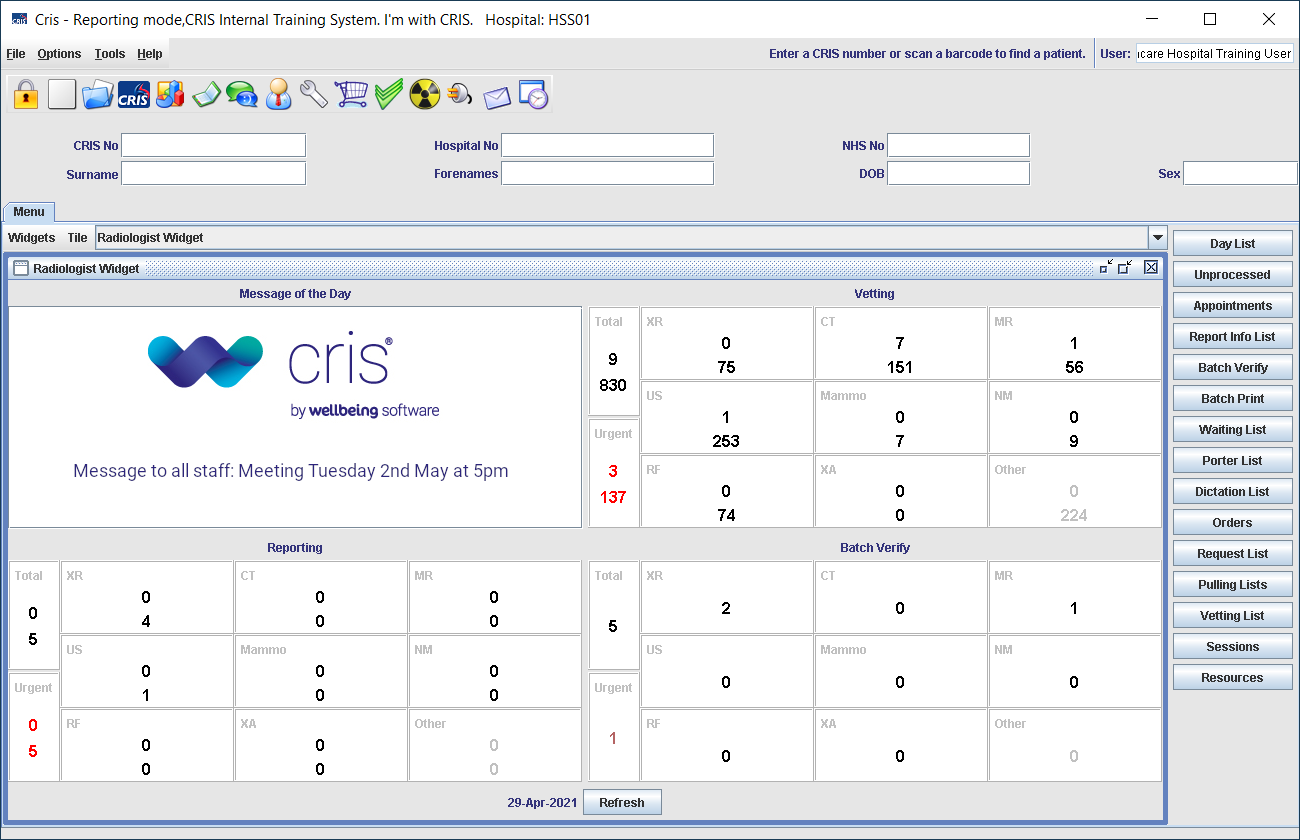System settings
System settings are used to control the behaviour and appearance of Cris. They can be broadly categorised as:
-
Tables - lists for reference.
-
Formats - instructions.
-
XR settings - configuration.
Tables
Limited and Normal Tables contain information which can be configured for local needs, such as staff; exams; modalities; and menu options. Limited tables are typically for limited menus, that is, menus with finite options such as Yes / No. Normal tables can have a varying number of items, for example, modalities and urgency codes.
Limited and Normal tables do not require day-to-day maintenance by the system administrator. They are generally managed by Magentus Service Desk.
Formats
Formats are short pieces of code or text which are referred to by other Cris settings. For example, the format Message of the Day can show a different message on the front page depending on the logged-in user.
XR settings
XR settings define a single action. For example, GENERAL.DisplayBounds is used to set the size of the Cris window.
Print settings
Configure letters, printing. Print settings in system tables should only be amended after consultation with Magentus. We recommend Letters training.
Other system settings
Configure Licences for additional modules and Destinations for sending events or reports.
Tip:
We recommend clicking Tools > Refresh Tables after editing system settings / tables to ensure that all changes are applied.
System Administration: System settings
Reference field to configure MOTD, restrict ordering.
Configure letters, printing. We recommend Letters training before amending these settings.
Define menus with more options - dose types, modalities, foetal presentation.
Define menus with finite options - alarm types, Yes / No fields.
Configure Licences for additional modules and Destinations for sending events or reports.
XR Settings for Modules:










































